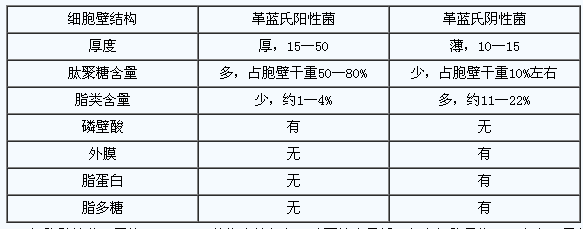Conceptual introduction of bacterial endotoxin
Bacterial endotoxin, known as Enolotoxin in English, is a unique structure on the cell wall of G-bacteria. The endotoxin is an exogenous pyrogen, which activates neutrophils and so on, releasing an endogenous heat. The original substance acts on the body temperature regulating center to cause fever. The main chemical component of endotoxin is lipid A in lipopolysaccharide.
The concept of bacterial endotoxin was introduced in 1890. It was derived from the study of febrile substances. In 1933, Boivin was first extracted from mouse typhoid bacillus for chemical immunology. By 1940, Morgan used Shiga's dysentery to clarify that bacterial endotoxin is a complex of polysaccharide lipids and proteins. By 1950, with biology, physical chemistry, immunology and genetics. The progress of research, the research work of bacterial endotoxin, especially the relationship between its chemical structure and various biological activities is more clear. Shanghai Chuangsai Technology provides 9048-46-8, low endotoxin bovine serum albumin, Albumin, from bovine pH 7.0 Low endotoxin, >97%, Biotech Grade, commodity number: C84-0004-50 g, price 2413 yuan.
The bacteria in English is called Bacteria: a type of single-cell microorganism in prokaryotes is propagated by the two-splitting method. According to Gram staining, bacteria can be divided into G and G-bacteria. The structure and chemical composition of the two types of bacterial cell walls vary widely. Peptidoglycan is the common component, but its content is different from the nature of the peptide chain, as shown in the following table:

The cell wall is thin, about 10-15 nm thick, and the structure is complicated. The peptidoglycan content is low, only about 10% of the cells are dry, and the layer is thin and loose. Because only the tetrapeptide side chain is directly linked between the peptidoglycans, the pentapeptide bridge is lacking; the peptidoglycan resides in the innermost layer of the cell, outside From the inside to the outside there are also three layers of polymers of lipoproteins, outer membranes and lipopolysaccharides.
(1) lipoprotein (lipoprotein)
It consists of lipids and proteins, which are bound between the outer membrane and the peptidoglycan layer. One end of the lipid is bound to the phospholipid of the outer membrane by a non-covalent bond, and the other end is covalently bonded to the peptidoglycan peptide chain. On the oxypimelic acid residue, the outer membrane and the peptidoglycan layer are integrated.
(2) outer membrane
It is an important structure of the cell wall of Gram-negative bacteria. It is located on the outer side of peptidoglycan. Its structure is similar to that of cell membrane. It is a liquid phospholipid double layer, which is embedded with some specific proteins, penetrates the inner and outer layers of the outer membrane, and is in liquid mosaic. There are tiny pores in the middle of the outer membrane, allowing water-soluble small molecules to pass through to transport and exchange substances inside and outside the cell. In addition, the outer membrane can prevent the entry of trypsin and lysozyme, and play a protective barrier.
(3) lipopolysaccharide (LPS)
It consists of polysaccharide O antigen, core polysaccharide and lipid A (lipid A), located in the outermost layer. The polysaccharide O antigen is outward, and the polysaccharide chain composed of repeating units of several oligosaccharides, that is, the bacterial antigen (O antigen) of Gram-negative bacteria, is specific. The core polysaccharide consists of heptose, galactose, 2-keto-3-deoxyoctonic acid (KDO), etc., and all Gram-negative bacteria have this structure. Lipid A is a unique glycolipid compound composed of pyrophosphate linkages, which is composed of a pyrophosphate disaccharide. It has a pyrogenic effect and is a toxic component of Gram-negative bacterial endotoxin.
Bacterial endotoxin is the toxin produced by many pathogenic bacteria.
Generally, bacterial toxins can be divided into two types, one is exotoxin; it is a toxic protein, which is a toxic substance secreted by bacteria outside the bacteria during growth. The bacteria that produce exotoxin are mainly Gram-positive bacteria. Such as diphtheria, tetanus, botulinum, Staphylococcus aureus and a few Gram-negative bacteria. Add one type of endotoxin. It is a unique structure on the outer wall layer of the cell wall of Gram-negative bacteria. Bacteria are not released when they are in a living state. They are only toxic when the bacteria die from autolysis or adhere to other cells. The main chemical component of endotoxin is the lipid A component in lipopolysaccharide. Shanghai Chuangsai Technology Co., Ltd. provides Gram stain solution kit >97%, commodity number: C018277-5ml*8, price 40 yuan.
CANSPEC quality provides excellent performance, spot promotions, biochemical reagents, product details, scientific instruments, laboratory supplies, Shanghai Chuangsai, mass products special promotions, welcome to inquire!
AUTRENDS INTERNATIONAL LIMITED , https://www.petspetskitty.com